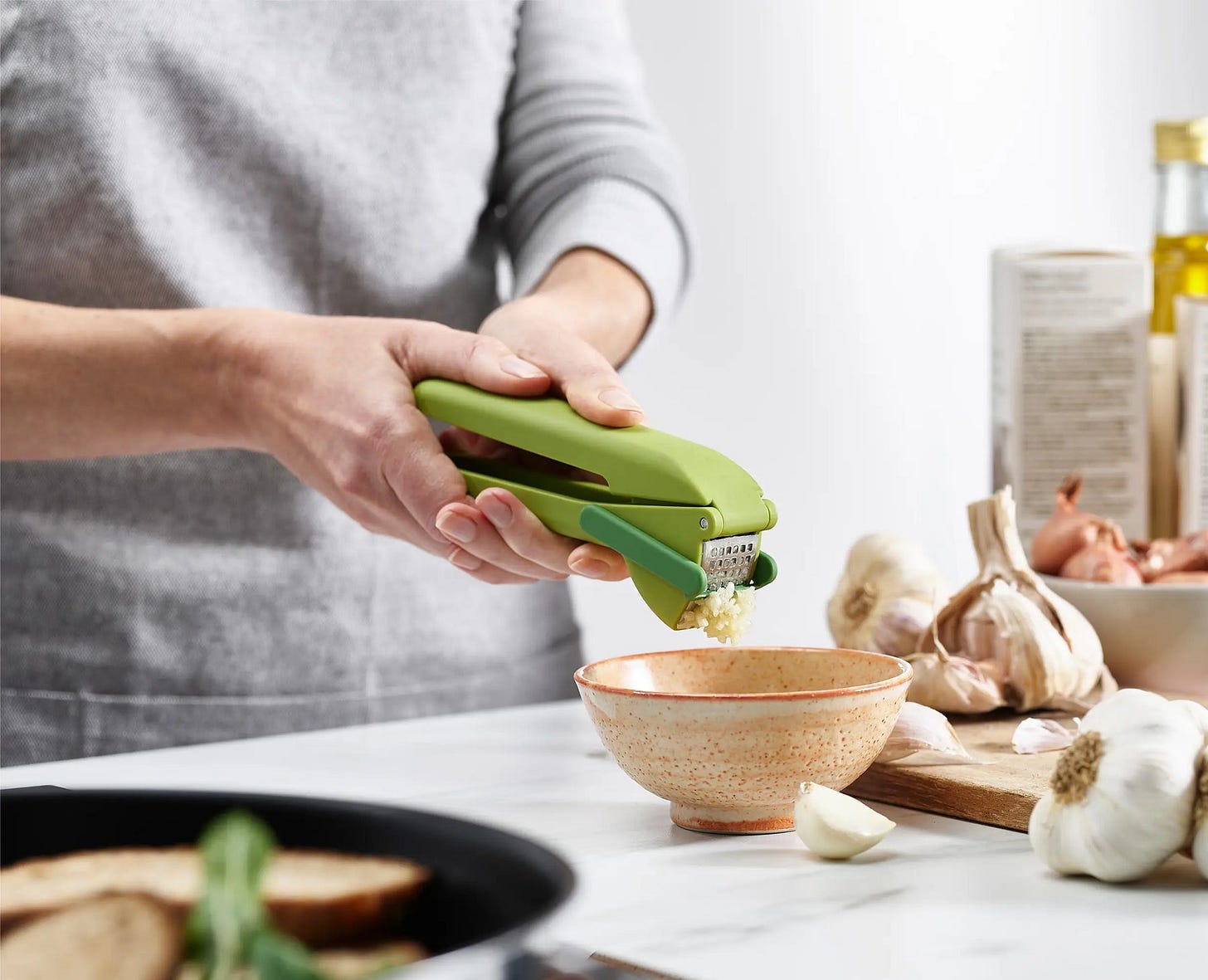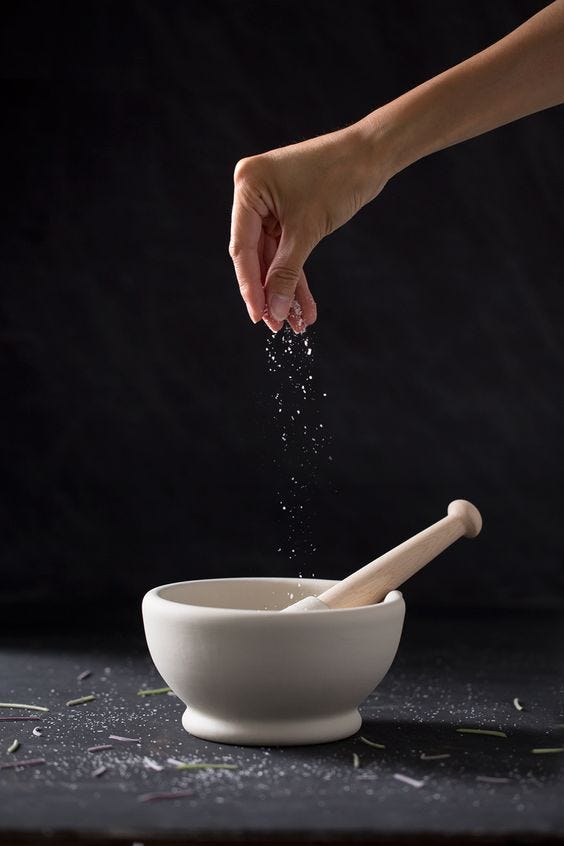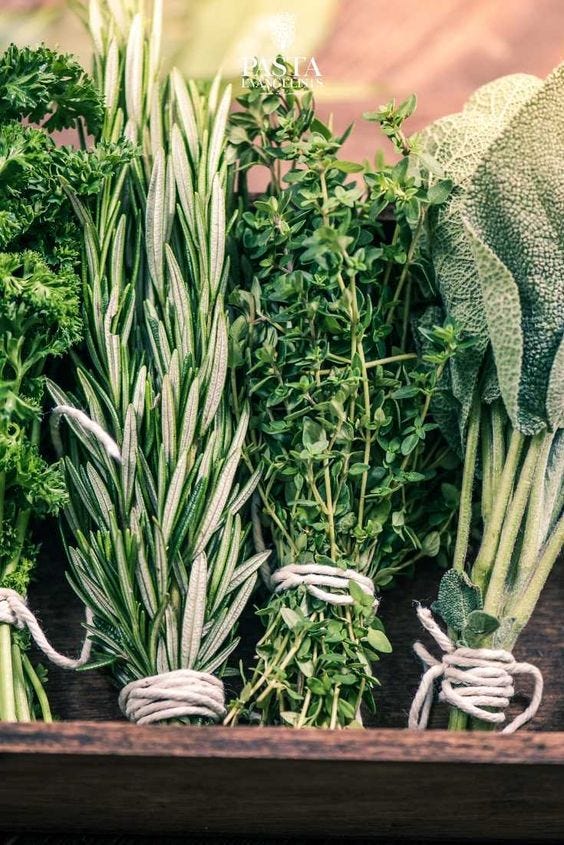Zesty's Top Kitchen Tips
Why correctly following a step by step recipe doesn't always produce the outcome pictured and expected.
When following a recipe, it can be easy to go down the path of simply following every instruction as it is written. This often produces a finished product that doesn’t quite resemble that shown in the video/picture. Do you often ask yourself, “why has it not worked as it did for [them], I followed the recipe after all?!”.
I’m here to tell you that it’s probably not because you couldn’t follow the recipe properly, but that recipes are nuanced and often rely on you to read in between the lines! Small steps that you are expected to follow but aren’t written in print can often cost you your dish, and sometimes sanity! From adding salt at the right moment to knowing when your dish needs some extra attention, the 11 tips I share below are what I consider to make a huge difference in elevating a dish and making a recipe make some sense.
Even if you’re not a huge cook, I think it’s hugely important to understand cooking. Understanding why you add ingredients at particular moments and utilise certain temperatures, for example, are crucial in being able to manipulate a dish to your taste and vision. Learning some of these subtleties can take time and practice but in doing so, you move a step closer to having more control over your cooking and what the outcome will be. Whilst I am no Michelin star chef, I do think i’ve got a decent grasp on quite a few tips and tricks to share in the kitchen that have helped me lots and hopefully will help you too!
ZESTY’S TIPS
Don’t always opt for using a garlic crusher!
It’s easy to find yourself often gravitating towards using your garlic crusher when you’re cooking, but do you ever wonder how this may be affecting your dish? Whilst using this handy device is convenient, it may not always be a suitable way of preparing garlic for a dish and it is sometimes worth considering the other methods. By mincing your garlic, when it is being cooked in a hot pan, it becomes more susceptible to burning than when prepared using other methods such as whole crushed or sliced. Additionally, it is worth thinking about the flavour profile you introduce in preparing the garlic in this way. Minced garlic is very fiery and punchy in flavour, is this what you want in your dish? Would you rather have a subtle undertone of garlic? If so whole cloves crushed under the flat side of a knife might be best. If you want the garlic to melt into your stew or flavour the dish more prominently, sliced may be best. I love a garlic crusher, but don’t tend to lean towards using it during hot cooking as it burns easily and I think sliced and whole crushed often adds more depth. I prefer using this device for marinades and sauces such as tzasiki, which it is absolutely perfect for.
Think about how you cut your ingredients
That leads on to my next point, think about how you cut your ingredients and what properties you are aiming to highlight. For example, are you dicing the onion because you do so on autopilot or because you think it will work best in your dish? If you are stir frying for example, it is worth thinking about cutting the denser parts of some vegetables separately, so as to cook them first. Consider using a mandolin for a thinner sliced cucumber or fennel slice in a salad to coat the vegetables in dressing more. Do you want the watery core to be cut out of the tomatoes in your salad? Do you want to cut your leeks and celery diagonally rather than horizontally to cook them over a larger surface area? These things are all worth exploring! What do you want to highlight, and how can cutting your vegetables support this?
Always cook aromatics and pastes first
To achieve the most flavour from your spices and pastes, fry them first. Before anything else goes in your pan, fry your spices in the fat of your choice first. Let each spice have a moment to cook before adding the next to maximise flavour, don’t simply dump them all in at once. After frying any spices which might be used (including black pepper!), fry off any pastes you are incorporating - for example tomato paste; harissa; Thai green curry paste; gochujang etc. After this you can then continue to add water dense ingredients such as vegetables and liquids. By cooking spices and pastes first, you are simply maximising their potential to bring the most flavour to your dish. It is, in my opinion, a crucial step to forming a strong foundation to your dish and is a much better alternative to adding them in once the dish has already been established.
Add salt to your onions!!!
Do you often find your onions burning during the sautéing process and don’t know why? By not adding salt to the onions you are sautéing, you are burning them! Salt is fundamental to the caramelisation process! Without it, the onions cannot release their natural waters to caramelise in. This is the perfect example of a step which goes unsaid in most recipes but is crucial that you follow to achieve beautifully softened onions. Like frying off your spices and pastes first, correctly sautéing your onions is essential in forming a strong foundation to your dish. Next time you’re browning your onions, add a generous pinch of salt to them as soon as they go in the pot.
Balance your flavours (Salt, Fat, Sweet, Acid)
Every dish you cook and enjoy should always find a balance between these fundamental components in order to taste right. Learning how to cook is so much more than following a recipe, it is understanding fundamental rules such as this one and making them your own. In understanding how to fix a dish that is too salty for example, you gain a whole new sense of control over your cooking. you are able to rely on your expertise to fix a dish that doesn’t taste quite right to you. Recipes won’t always work for everyone and I am a big believer in adapting dishes to your own taste.
Here I’ve explained how certain flavours might be fixed and how to find balance with a few examples:
Too spicy → add fat (dairy products such as yoghurt and milk are great), bulk up the dish with more starchy ingredients and vegetables to mask the spice and adjust the other flavours accordingly.
Too Bitter → needs sweet flavours or fats
Too salty → depends on what you are cooking but can be overcome by adding water to a stew; bulking up a dish with more vegetables and starch; adding fatty dairy products.
Too sweet → add acid
Learning to balance flavours is definitely a skill to acquire and is a learning curve, but is such a powerful skill in the kitchen. You gain full autonomy over your cooking. I believe a “ruined” dish is almost always salvagable by utilising these rules, you’re just missing something! Think about what you can add to fix the dish, there’s almost always a solution!
Think about the components of your dish individually!
In my opinion, for a dish to taste complete and rounded, the individual components must be treated with attention. For a dish to taste complete, all of its individual components must be able to stand alone. For example, when adding bulgar wheat or cous cous to your tabbouleh, it is imperative to ask yourself whether it tastes good enough to enjoy alone before adding to the salad. If it has only been cooked in water and tastes bland, think about dressing it with oil and salt before it meets the salad. You might think that it won’t need it because the salad has already been dressed/ soon will be, but I firmly believe that the bland taste will carry into the dish and ruin its potential to taste as good as it could be. Other examples of this theory apply to rice and stew - just because a stew is too salty, it does not mean that you should add no salt to the rice you are cooking to pair it with. You won’t be balancing the flavours by taking crucial elements away from whole components. In a scenario like this, it may be more productive to try to make the stew less salty by adding more vegetables or liquid because nobody wants bland rice! Similarly, just because you are using cheese in a pasta, it does not mean you should avoid salting the pasta water! Separate components must be able to stand alone in order for a dish to have sense of harmony.
Salt in stages
That leads on to my next point, it is essential that salt is added in layers throughout the cooking process. This point shares a similar narrative to that of the last in appreciating the importance of layering flavour. By adding a pinch of salt when a new component is added to a dish, you are making sure that the dish is constantly seasoned. Each person might go about this differently as salt preferences vary, however, I think that adding some salt at different moments during the cooking process is important, rather than just at the end. You are highlighting and layering the individual flavours of ingredients better by doing this.
Keep that veg moving!
Don’t let your vegetables get watery over the stove because you didn’t give them enough attention. Make sure to keep stirring the vegetables - or better, tossing, if you are interested in really elevating your cooking - so that they don’t sit and release too much water in the pan. Tossing vegetables is a skill utilised in cooking to mix the elements in a pan whilst generating the least liquid possible. It is an essential element to cooking a great stir fry, whose main difficulty is keeping the water dense ingredients dry whilst frying. An easy tip to avoid soggy veg is to simply be more attentive and not leave your vegetables alone over the stove, watch over and move them constantly.
Herbs, Herbs, Herbs
Herbs are a fab way to elevate any dish and I can guarantee you that there’s almost always an appropriate pairing. Experiment with different varieties, taste them and understand their textures to make better informed decisions when cooking! Herbs are so much more than just a garnish, they can hugely contribute to the flavour profile of a dish. It is definitely worth researching and experimenting! Some of my favourites to use include parsley and coriander but there is so much more to explore! Check out your local Asian supermarkets for varieties which you might not find in regular supermarkets such as Thai basil!
Deglaze that pan!
whilst deglazing might sound complicated and intimidating, it really isn’t! It is super simple and is a great way of not only making sure no flavour goes to waste but also making your washing up process a bit easier. You can use alcohols such as wine and beer to deglaze but some people also use non alcoholic liquids such as stock or even water. Don’t let all that flavour built up at the bottom of your pan go to waste, deglaze it!
Don’t be afraid to use your fingers and feel the ingredients
In the world we live in today, we have become somewhat detached from food, some might argue. Many of us don’t play a role in growing our food and don’t always fully appreciate where it might have come from. I believe that this has strongly manifested in contemporary attitudes to cooking, also. From buying pre cut veg to fears of even engaging in certain ingredients such as raw chicken, we have become somewhat detached to the ingredients we use to create meals. I think it is so important to understand what you’re working with when cooking. Understanding the properties of the ingredients you’re using is essential. A huge aspect of understanding comes from physical touch. Don’t be afraid to mush/ manipulate your ingredients to better fit your dish and feel the physical properties of your ingredients before cutting and cooking them. By understanding the physical properties what you are about to cook with and by manipulating shapes to your liking, the end result meets your imagination even closer.
Thank you so much for reading and supporting ZestyZaytoon!
If you haven’t already, subscribe to ZestyZaytoon here to get alerts and updates on new posts!








Love this! Such a thoughtful post; written in a really engaging way. Give us more!
I learned so much! So well written and thoughtfully put together. Thank you!